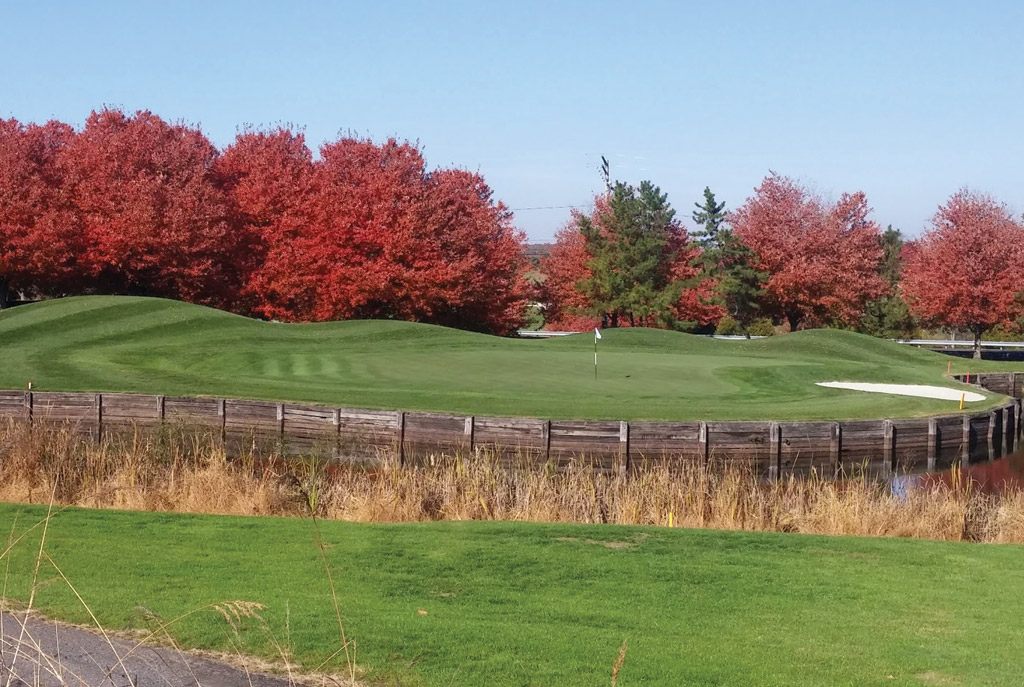[…]in hearing your feedback on this question or answering questions you may have. Please use the form below to contact […]
[…]to monitor pest control efforts and to plan future management actions. Use electronic or hard-copy forms and software tools to properly track pesticide inventory and use. Develop and implement a pesticide drift management plan. Keep a backup set of records in a safe but separate storage area. Next: Pesticide Transportation, Storage, and […]
[…]see Urban and Stormwater Pond Management and see Plants Recommended for Stormwater Ponds for Maryland-specific native aquatic plant recommendations. Best Management Practices Ponds are more resistant to problems if they have a narrow fringe of vegetation along the edge, instead of highly maintained turfgrass. In ponds with littoral plantings, problem plants should be selectively controlled without damaging littoral shelves. Encourage clumps of native emergent vegetation at the shoreline. A comprehensive management plan should include strategies to control the growth of nuisance vegetation that can negatively affect a pond’s water quality and treatment capacity. Frequently remove filamentous algae by hand and/or […]
[…]investigate all regulatory requirements that apply to the golf facility to protect water quality and to manage stormwater. MDE sets standards for the level of protection afforded to each body of surface water in the state (see COMAR 26.08.01 and COMAR 26.08.02). Water quality standards protect and enhance surface water quality, protect public health and welfare, protect aquatic resources, and serve the purposes of the federal Clean Water Act and all its amendments. In practice, Maryland’s water quality standards form the basis for state programs that control the amount of pollutants entering waters from such sources as industrial plants, sewage […]
[…]sources on or surrounding the golf course and on any surface water. This information can be used to form a baseline of flow and nutrient/chemical levels. For established courses, ongoing, routine water sampling provides meaningful trends over time. A single sample is rarely meaningful in isolation. Sampling parameters are based on golf course operation and basin-specific parameters of concern, such as TMDLs. Typically, samples should be analyzed for nutrients, pH and alkalinity, sediments, and suspended solids; additional analysis can include DO, heavy metals, and any pesticides used on the golf course. Samples should be analyzed by a certified laboratory and […]
[…]desirable color, growth density, and vigor and to better resist diseases, weeds, and insects. Weed-free materials should be used for topdressing. Address damage from turfgrass pests such as diseases, insects, nematodes, and animals to prevent density/canopy loss to broadleaf weeds. Annual bluegrass encroachment in green. Photo credit: Thomas Turner. Next: Turf […]
[…]are fostering programs and initiatives that will benefit the game and its environment for years to come. United States Golf Association USGA provides governance for the game of golf, conducts the U.S. Open, U.S. Women’s Open, U.S. Senior Open, 10 national amateur championships, two state team championships, and international matches, and celebrates the history of the game of golf. The USGA establishes equipment standards, administers the Rules of Golf and Rules of Amateur Status, maintains the USGA Handicap System and Course Rating System, and is one of the world’s foremost authorities on research, development, and support of sustainable golf course […]
Wellhead protection is the establishment of protection zones and safe land-use practices around water supply wells in order to protect aquifers from accidental contamination. It includes protecting wellheads from physical impacts, keeping them secure, and sampling wells according to the monitoring schedule required by the regulating authority. Before installing new wells, the local regulatory authorities should be contacted to determine the permitting and construction requirements and the required isolation distances from potential sources of contamination. New wells should be located up-gradient as far as possible from potential pollutant sources, such as petroleum storage tanks, septic tanks, chemical mixing areas, or […]
[…]of gravel. Surface water runoff and internal golf course drains should not drain directly into an open waterbody, but should discharge through pretreatment zones and/or vegetative buffers to help remove nutrients and sediments. The drainage system should be routinely inspected to ensure proper function. Drainage installation during the construction of a new tee. Photo credit: Thomas Turner. Next: Habitat […]
[…]existing vegetation through the supplemental planting of native species next to long fairways, out-of-play areas, and water sources. Design out-of-play areas to retain or restore existing native vegetation where possible. Nuisance, invasive, and exotic plants should be removed and replaced with native species adapted to that particular site. Select a greens location that has adequate sunlight to meet plant-specific needs and that provides sufficient drainage. Choose a green size and sufficient number of hole locations that can accommodate traffic and play damage but are not so large that they are unsustainable. Select an appropriate root-zone material for the site. Consider […]
